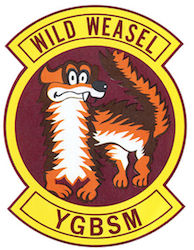
The USA’s protracted involvement in the Vietnam War (1955-1975) remains to this day nearly as controversial among the historians who study it as it was for the military and civilian contemporaries who experienced it. And for good reason. Regardless of which side one takes in the never-ending debates regarding the origins, operations, and outcomes of the conflict, one thing seems clear: the undeclared war against the Marxist North Vietnamese regime (officially the “Democratic Republic of Vietnam,” or DRV) proved an expensive and humiliating lesson for the US Armed Forces. In addition to claiming the lives of 58,220 service personnel and costing an estimated $110.7 billion in direct war-related expenditures (or, roughly, $770 billion in 2016 dollars) the conflict shattered the illusion of American dominance and compelled a major reconsideration of the nation’s global military and diplomatic policies.
One of the most important reconfigurations to emerge from the conflict involved the shifting technologies and tactics employed in aerial warfare.
The dispatch of Soviet-made, SA-2 radar-guided surface-to-air missile (SAM) defense batteries to the DRV in Spring 1965 posed a major challenge to American military commanders. First devised by Soviet technicians in the post-WWII period to augment air defenses over the USSR’s capital, Moscow, the Soviet SA-2 entered operation in 1957. The new weapon system scored its first major “hit” just three years later when, on 1 May 1960, an SA-2 downed an American high-altitude U-2 spy plane (piloted by Gary Powers) operating over Soviet airspace. The arrival of SA-2s to North Vietnam in 1965 threatened to the cornerstone of American strategy in the conflict: maintaining air superiority over Southeast Asia.
American military officials responded to the SAM threat by introducing the so-called “Wild Weasles,” modified two-seat jet fighters equipped with radar-seeking munitions capable of honing in on the signals that emanated from the SA-2 installations. The experimental program called for US airmen to fly into enemy airspace and allow the radar units attending the SAM batteries to target them. Having thus identified the location and source of the radar signal, the “Weasel” would attempt to knock out the SA-2 installations before the SAMs shot the American plane out of the sky. The simple, though highly dangerous, missions flown by these aircrews amounted to serving as “bait.” (The Wild Weasels’ unofficial motto is credited to Electronic Warfare Officer (EWO) Jack Donovan who, when first informed of the concept, responded: “You gotta be shittin’ me!”)
By the end of the conflict what had come to be known as “Suppression of Enemy Air Defense” (or, SEAD) was an integral component of US air operations. In the decades that have passed since then, SEAD has grown to encompass an ever-widening array of advanced technologies and techniques.
For a closer look at the origins of the Wild Weasels, check out the video below from the Discovery Channel’s 1998 mini-series Wings Over Vietnam. [Approx. 50-minues]
[embedplusvideo height=”391″ width=”695″ editlink=”http://bit.ly/1qTAYnG” standard=”http://www.youtube.com/v/JDEtHmGcl6Y?fs=1″ vars=”ytid=JDEtHmGcl6Y&width=695&height=391&start=&stop=&rs=w&hd=0&autoplay=0&react=1&chapters=¬es=” id=”ep8558″ /]

 Saving...
Saving...